-
Car Reviews
- Car News
-
Car Comparisons
Latest comparisons
- Chasing Deals
With a plugless hybrid system and improved looks, GWM’s Haval H6 Ultra HEV seems to make sense – but is now the right time to buy?
While the mantra of “moving fast and breaking things” appears to have been the unspoken strategy of many of its Chinese carmaking peers, GWM — the conglomerate behind sub-brands Haval, Cannon, Tank and Ora — has acted more like a traditional brand.
Since launching with a series of pretty forgettable utes in 2009, GWM has slowly iterated and improved its product and enjoyed a gradual uptick in sales success over the years. Chasing Cars has called out problems with GWM cars and seen the manufacturer respond, its fixes being of mixed success.
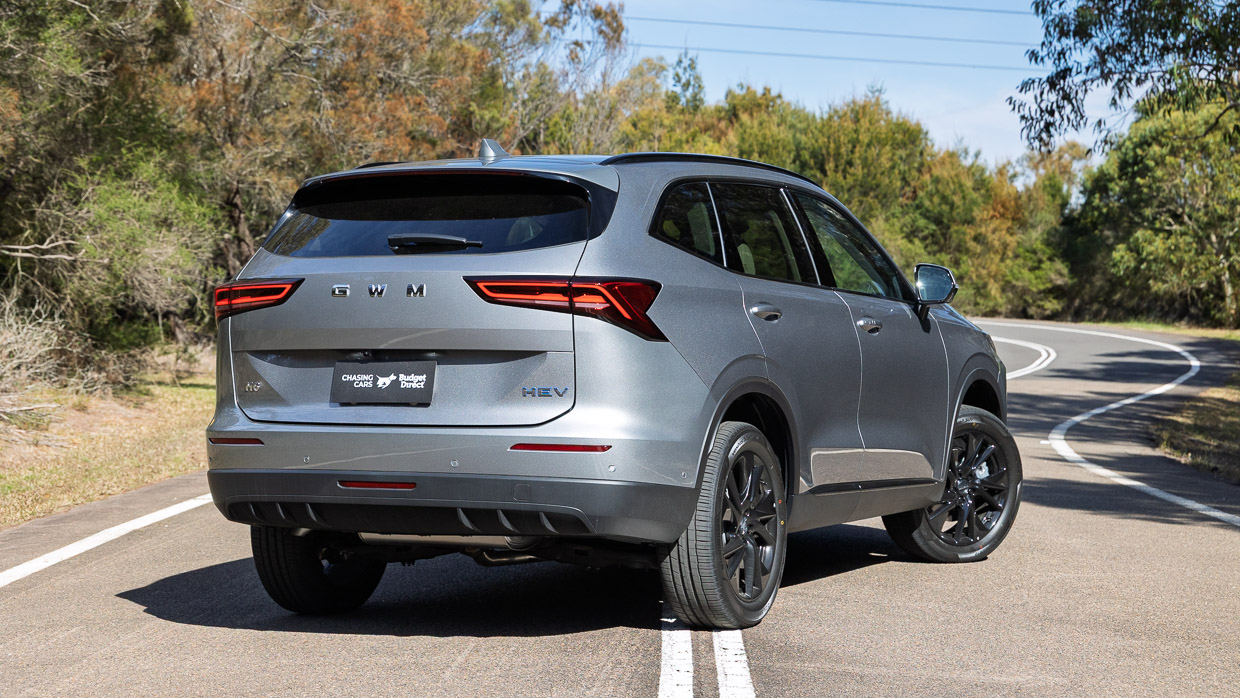
Now, though, flush with new executive talent poached from rivals, GWM wants to turbocharge that growth and become a top-five brand locally. That will require its utes (including the Cannon Alpha PHEV) to do big business; most important, though, is getting a midsize SUV right.
While GWM has a few medium crossovers in its expanding lineup, the most important is the Haval H6. At 4.7 metres in length, this is a pretty classic ‘Toyota RAV4 on a budget’ sort of vehicle. H6 is a two-row, family-sized plugless hybrid that rides high.
Except that it’s more than 20 percent cheaper than the Toyota, like for like, and very generous on specification. And next month it’ll also be available as a plug-in hybrid with nearly 100km range; and there’s still a non-hybrid option on offer, too.
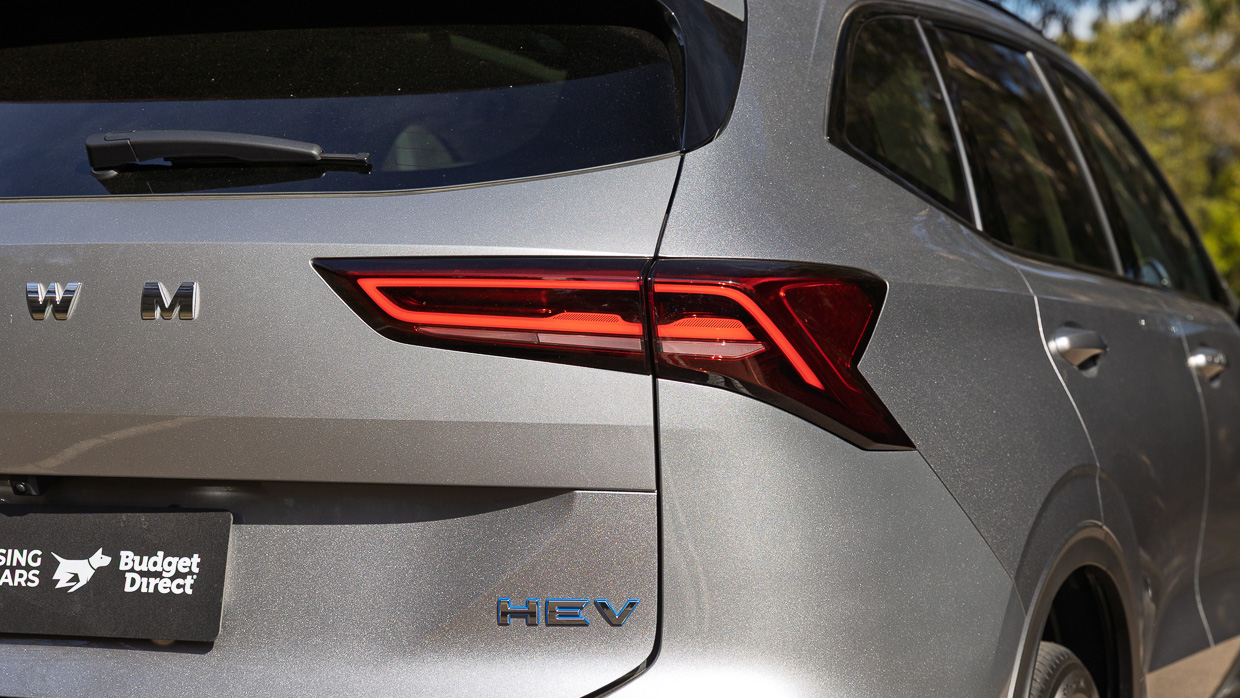
We’ve tested the H6 a number of times in third-generation form and have generally found it to be spacious and competent enough – but cheap inside and mediocre to drive.
This year marks a major late-in-life facelift for the gen-three H6. Banished are the acres of exterior plastichrome in favour of a more mature aesthetic; the cheapest base grade is gone, replaced with a clearer two-tier Lux/Ultra lineup with a tonne of specification.
But the mechanical package essentially carries over… for now. GWM has made a meaningful hire in Australia in picking up Rob Trubiani, an ex-General Motors chassis guru who contributed to the great-to-drive VE/VF Commodore effort.
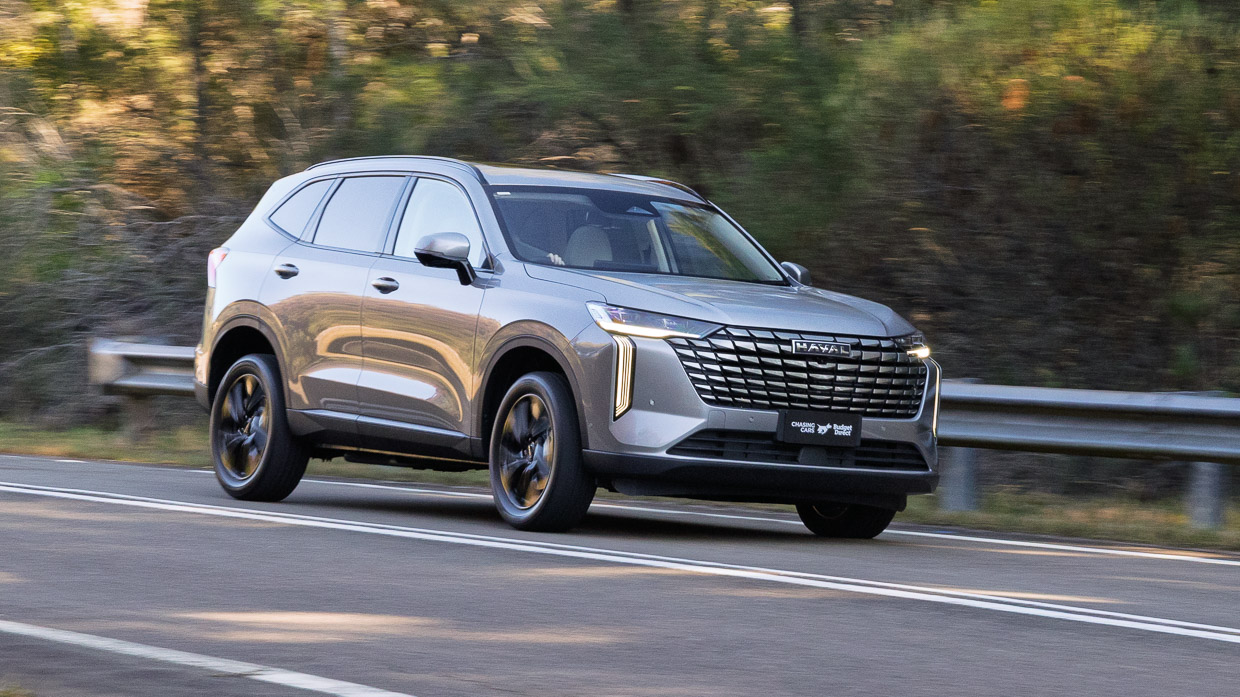
Trubiani has, we’re told, been given good access to changing the ride and handling of key GWM models like the H6 – but his changes haven’t come down the production pipeline yet.
So is now the right time to buy a freshly facelifted Haval H6? Let’s investigate.
There are two vehicles in Australia that wear the Haval H6 badge. The first is this facelifted, conventionally ‘wagon-bodied’ SUV measuring 4703mm long, 1886mm wide and 1730mm high on a 2738mm wheelbase.
The second Haval H6 is the H6 GT – it hasn’t been facelifted yet, and it wears more rakish coupe-like styling. Also of note is that Haval will soon launch an SUV called the H7, which is an H6 underneath with far boxier styling on top for those that prefer square lines.
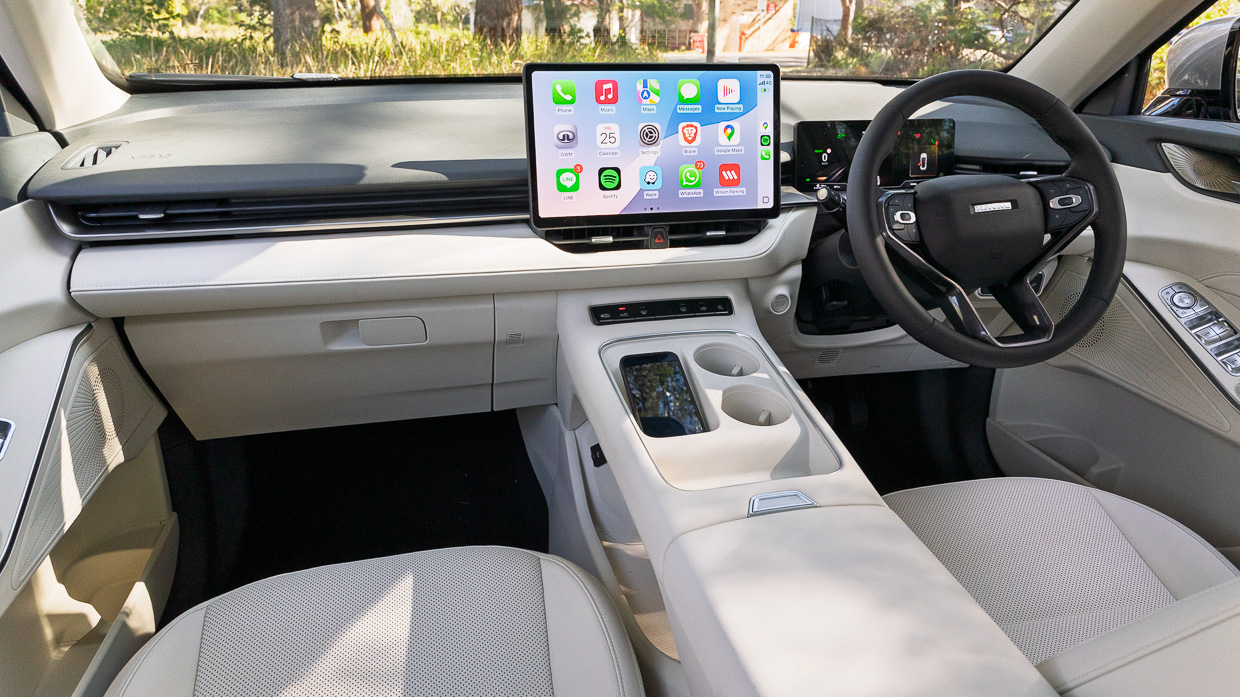
Beyond the inside-and-out facelift, the biggest change to the H6’s value proposition this year is the deletion of the Premium base model which previously opened with petrol power at $33,990 driveaway – that’s very cheap for a midsize SUV these days.
With extensive visual changes, the updated H6 now kicks off $2000 higher with the H6 Lux, priced at $35,990 (d/a) with a 170kW/380Nm 2.0-litre turbo petrol four-cylinder engine (ICE) or $40,990 (d/a) with a 179kW/530Nm 1.5-litre turbo plugless hybrid (HEV) – both of which are front-wheel drive.
Lux moves a little upmarket in facelift form, adding larger 19-inch alloys (now in black), a big 14.6-inch touchscreen with wireless Apple CarPlay/Android Auto, six-way power driver’s seat, tilt/telescoping adjustments for the steering wheel, and auto-folding mirrors.
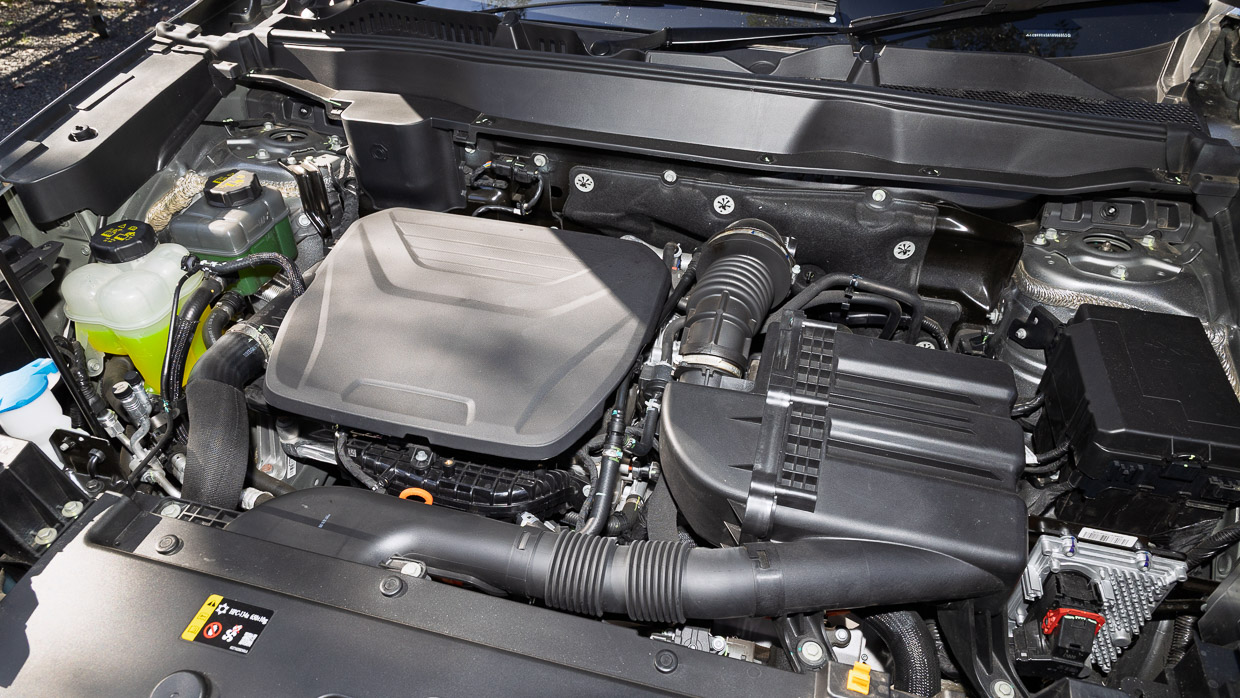
Other Lux spec continues on, including auto LED headlights, 360-degree camera, fake leather, a 10.25-inch digital instrument cluster, eight-speaker stereo, 50-watt wireless charger, keyless entry, four USB ports and tyre pressure monitoring.
Our test vehicle was the higher of the two trim grades – the H6 Ultra, which kicks off at $38,990 (d/a) for the ICE powertrain and $43,990 (d/a) for the HEV. This grade of H6 actually saw a $2000 price reduction in facelift form.
Unlike Lux, Ultra trim can also be specified with plug-in hybrid (PHEV) power: a 240kW/540Nm front-wheel drive version, or a 268kW/760Nm AWD from GWM’s newer Hi4 series of PHEVs – the latter promising a blistering 4.8 second 0-100km/h time.
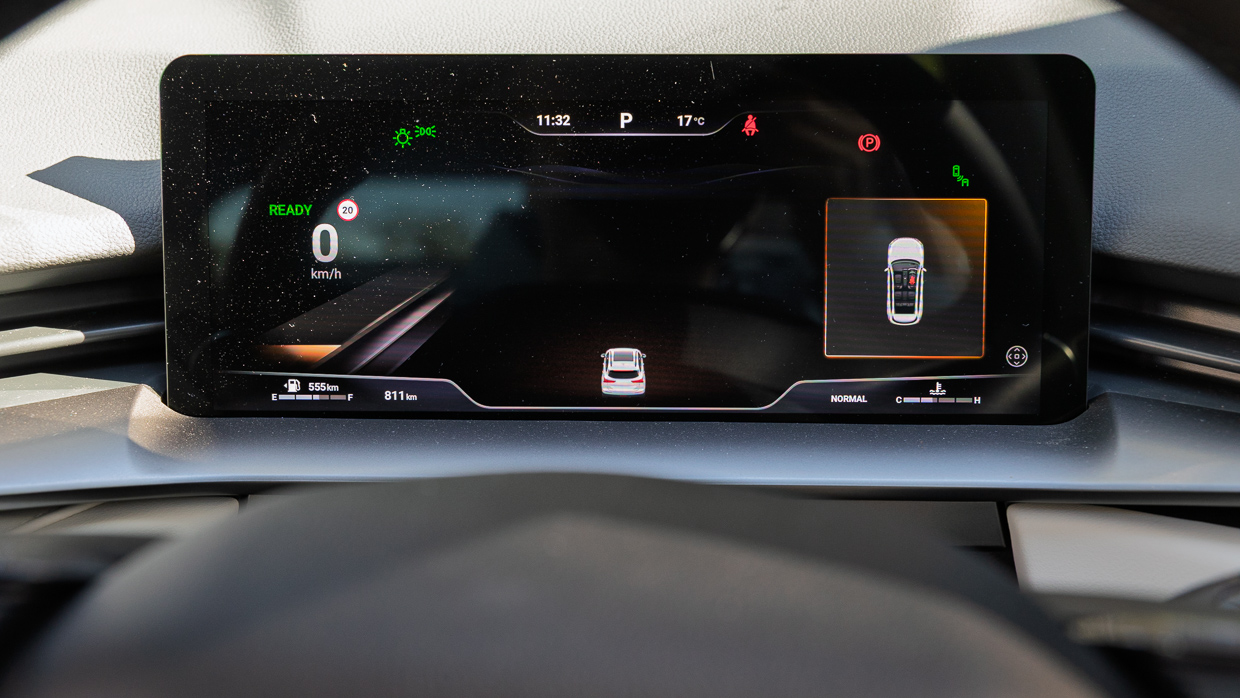
Atop Lux, Ultra adds privacy glass, an opening panoramic sunroof, heated and cooled front seats, a heated steering wheel, memory and lumbar adjustment for the driver’s seat, heads-up display, automated parking, and front parking sensors.
The only options relate to colour. Hamilton White is no-cost, while Astral Pearl, Ayers Grey and Golden Black each attract a $495 premium. The internal Comfort Tek upholstery is black by default though a cooler-for-summer cream hue is no-cost on Ultra.
How the H6 drives is a story of three distinct engine types: non-hybrid, plugless hybrid, and PHEV. Performance ticks up at every step while fuel economy gets better – though more speed is only a good thing if a car’s chassis and tyres can handle more pace.
We’ve tested the ICE and HEV versions of the H6 in the past and their mechanicals carry over. The twin PHEVs are the new addition for the regular-shape H6, and we’ll be testing the plugged versions soon – especially the new Hi4 AWD plug-in with its ultra-rapid acceleration claim.
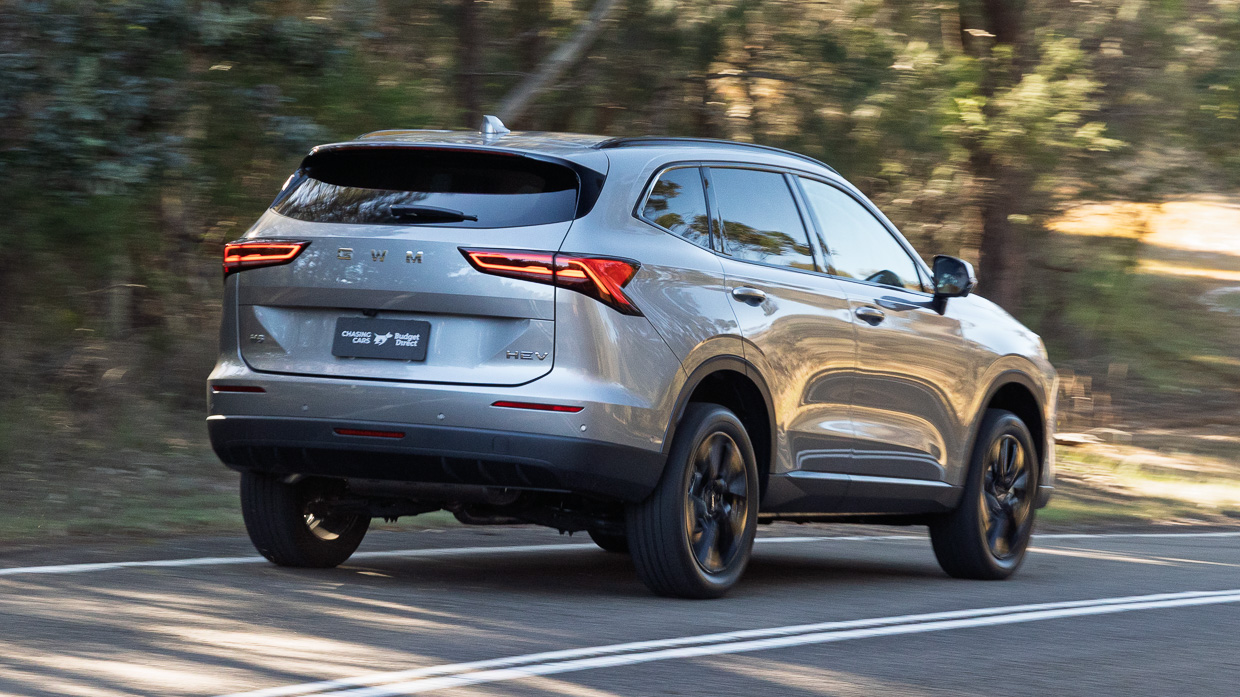
The non-hybrid petrols haven’t arrived in facelift form so our test was entirely limited to the Ultra HEV, which combines a 1.5-litre turbocharged petrol ‘four (110kW/230Nm) to a front electric motor and hybrid transmission (130kW/300Nm).
Combined outputs look pretty lush at 179kW/530Nm. GWM’s policy is quite different here to Toyota, for instance, which states the RAV4 makes 160kW (in front-drive form) but does not provide a combined torque figure.
That might be for a good reason, because while the H6 HEV looks powerful, the amount of performance it is willing and able to dole out really depends on the stars aligning – you need sufficient charge in the hybrid battery, the petrol engine to be at the correct revs and the hybrid power unit (HPU) to play along.
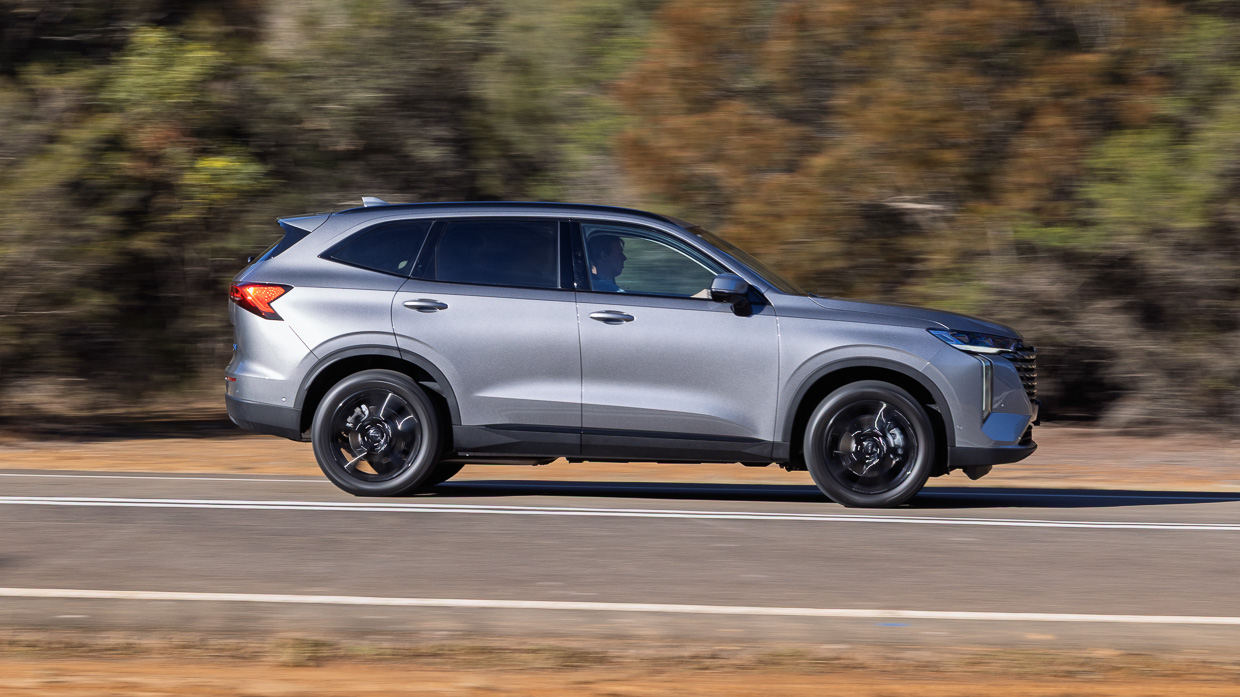
On our test, the stars didn’t often align and the HEV powertrain lacked resolve. Accelerating and turning away from a junction, demanding about 50 percent throttle, we were repeatedly caught out by the HPU hesitating for seconds at a time about whether to wake the petrol engine up – the H6 just sitting there, engine revving, going nowhere.
Adding insult to injury is the fact that, once the control units do finally work out how much petrol and electric power to combine, the torque that arrives overwhelms the surprisingly limited grip of the front tyres, which then attempt to lay a burnout past pedestrians.
This doesn’t mean the core powertrain is bad. It’s all in the software tuning – this can be solved. We just wish it had been solved to accompany the relatively handsome facelift.
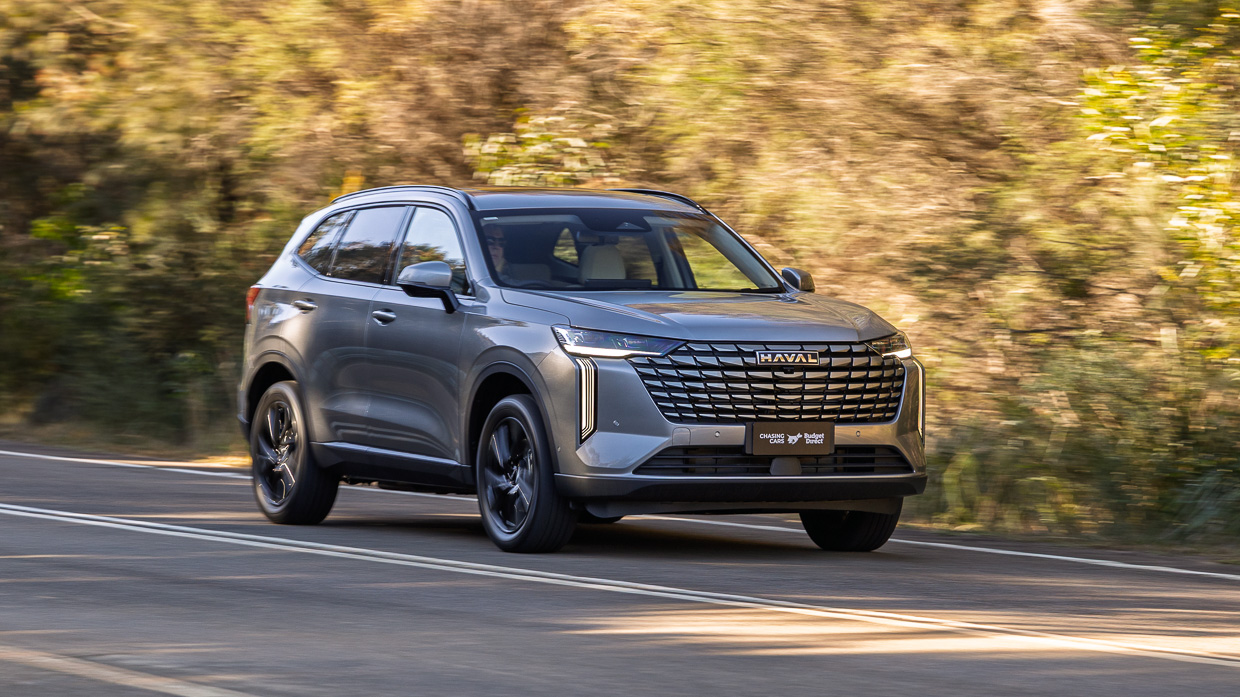
Sometimes, the HEV powertrain just works. Rolling acceleration (such as from 60km/h to 100km/h) is excellent – the turbo petrol’s muscular performance conjoining to available electric power to accelerate very promptly and quietly. When the HEV system works, it works well!
We suspect that the ICE version is simpler and crisper (albeit thirstier). Maybe the PHEV will be the combination that feels smoothest in the H6; we’ll see.
The reason we’re tentative about whether now is the right time to buy an H6 comes down to the ride and handling, which we know GWM, and ex-GM, engineer Rob Trubiani is likely to alter significantly over time – though his changes haven’t been seen yet.
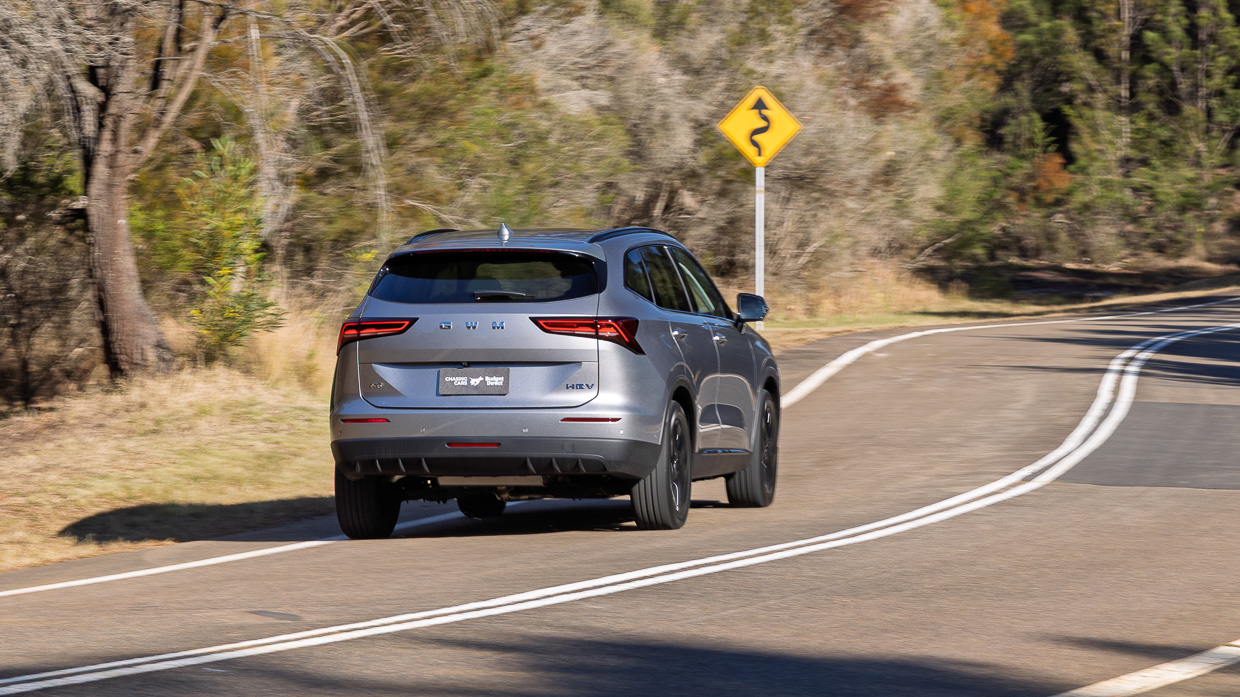
Frankly, the H6 isn’t terrible to drive, though it does trail the intuitive, pleasant dynamics of the segment-leading Toyota RAV4. It also trails ‘middle of the road’ SUVs like the Hyundai Tucson/Kia Sportage for consistency of control surfaces, ride quality, and handling ability.
Relatively loose steering, a tendency to understeer (multiplied by oddly poor traction on the Hankook tyres) and some rack rattle when hitting mid-corner bumps reveal plenty of work for Mr Trubiani.
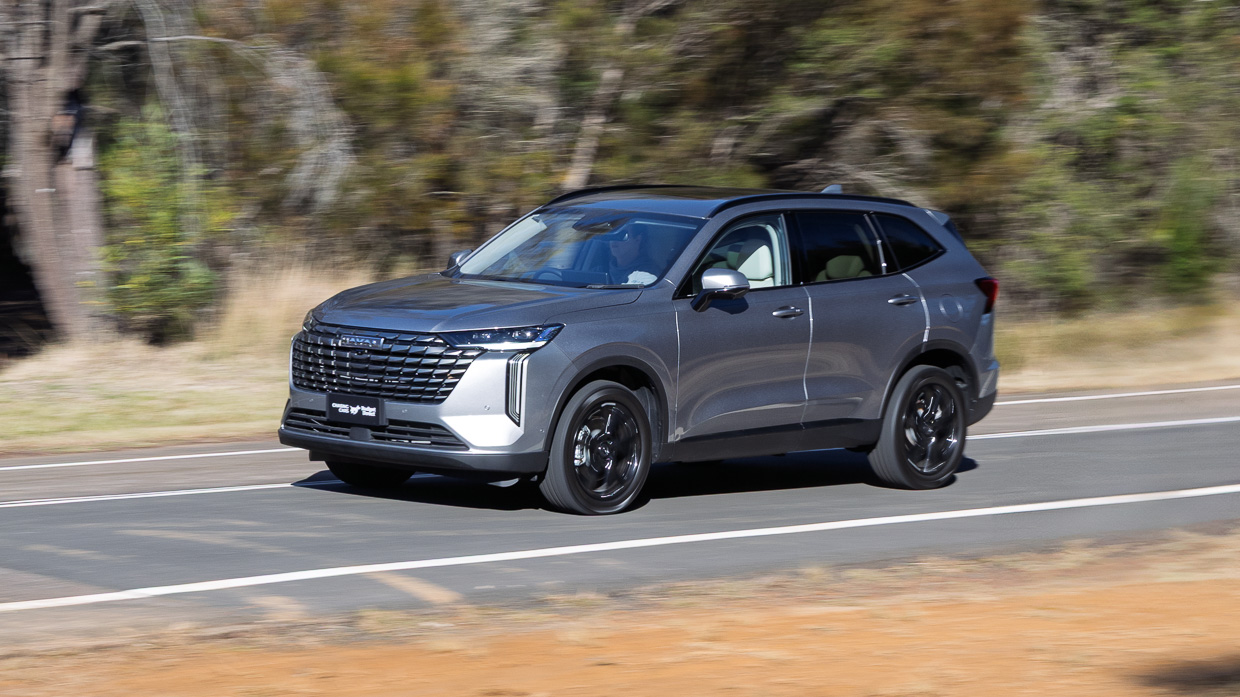
The suspension isn’t too bad, with reasonable body control from the spring/damper rates keeping the body level after hitting speed bumps, but the inherent ride quality is firm and at times a touch harsh. The big 19-inch wheels wouldn’t be helping in that regard.
Whether Trubiani will be able to catapult the H6 from the bottom half of the segment (on driving dynamics terms) to the top half remains to be seen – but having witnessed his work at Holden we’d be waiting to find out.
With the facelift of the H6, GWM has made more changes than usual to the structure of this SUV’s cabin. While the top part of the dashboard shape has been retained, a new central bridge design sees the transmission selector relocated to the column, while a lot of new storage has been added in its place.
Our tester’s cream Comfort Tek interior was ultra-bright, multiplying the feeling of airiness, but there’s no way to avoid it: the H6 is very spacious inside, with heaps of room to stretch out for front and especially rear seat passengers.
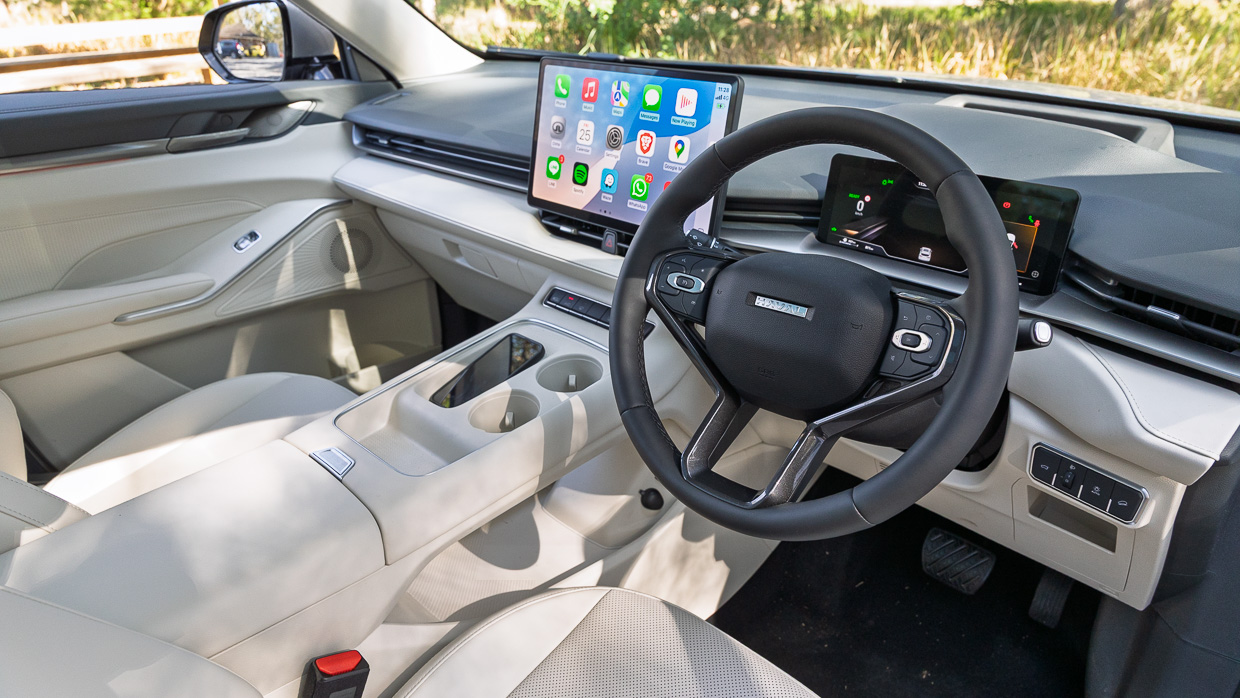
The affordable pricing of the H6 should give away that this isn’t a luxury car, though GWM has done a reasonable job coating the interior in a ‘veneer’ of premium materials – almost literally, with a soft, vaguely gummy surface covering the new bridge to stop phones and coins sliding about.
Sadly, the front seat shaping carries over from the pre-facelift H6. For our body type, the pews are not comfortable, particularly due to a lack of under-thigh angle adjustment meaning our legs go unsupported while driving. Try this yourself to see if you’re in the same boat.
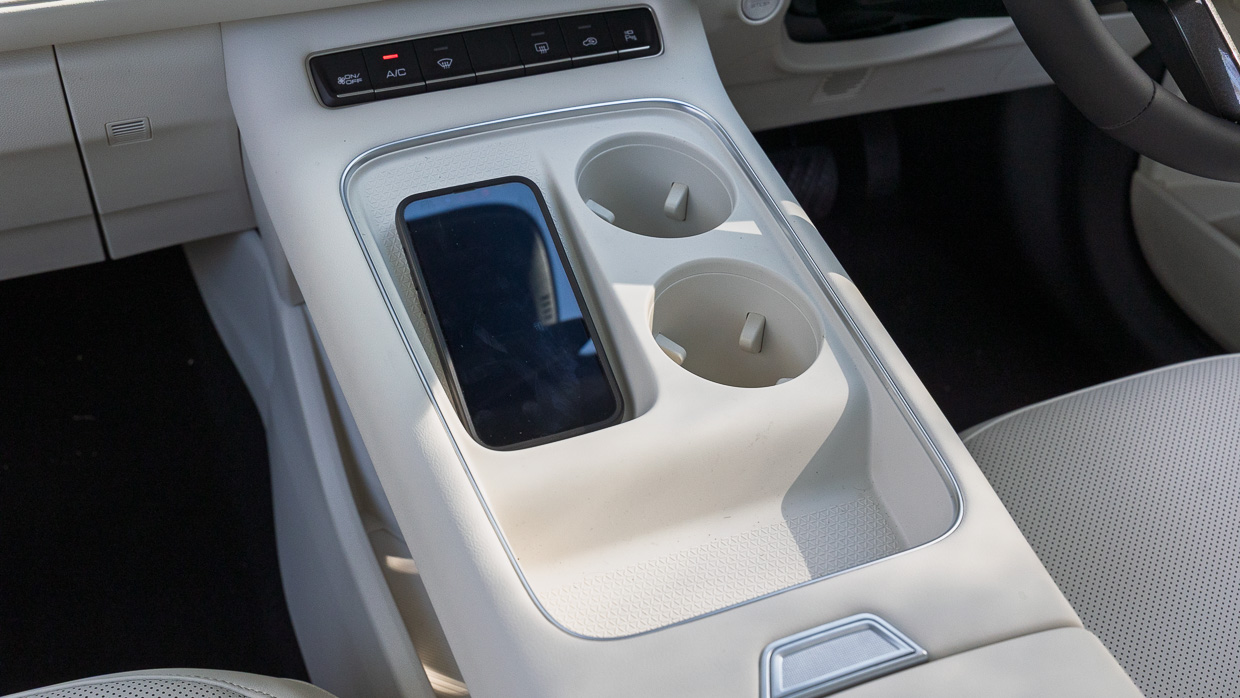
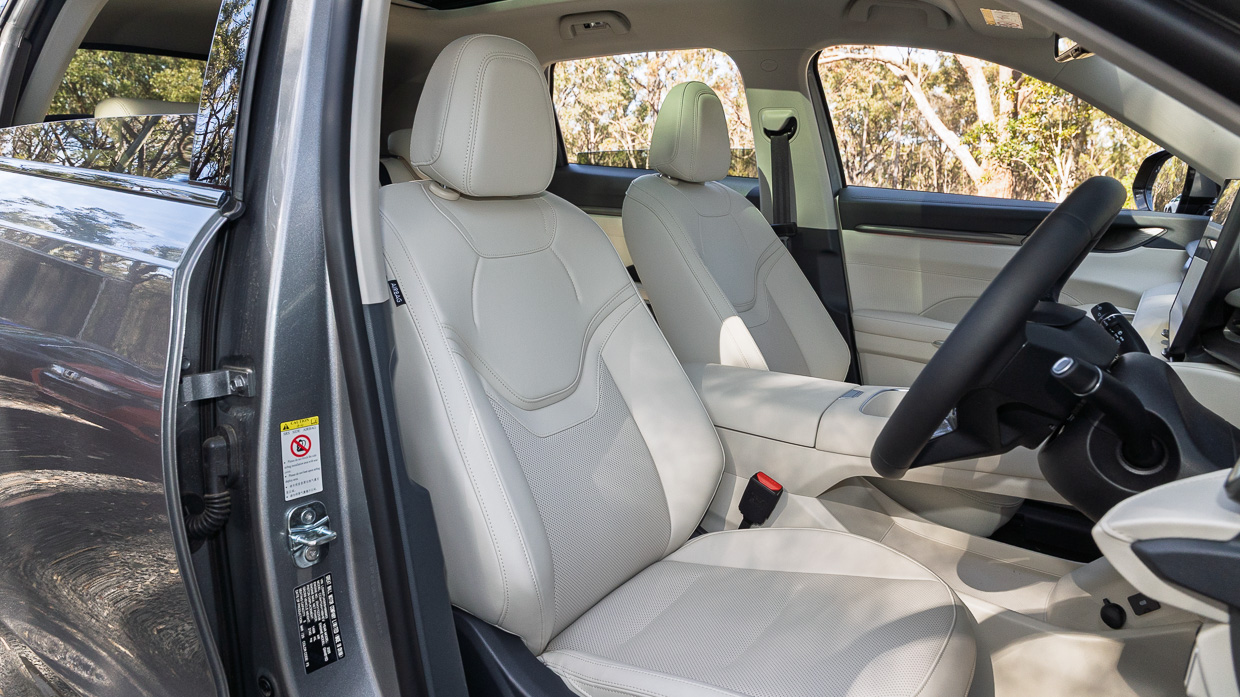
Comfort Tek is artificial leather that induces sweat in summer – at least it did when black was the only interior colour option. Not only will the white alternative help, the Ultra also benefits from surprisingly forceful cooled seats (they’re also heated).
The steering wheel is heated too, and its rim is now thicker. An oddity is that the PHEV actually has a different wheel, because its infotainment system is a generation newer than the other H6 powertrains, packing with it connected car tech like remote locking and climate control.
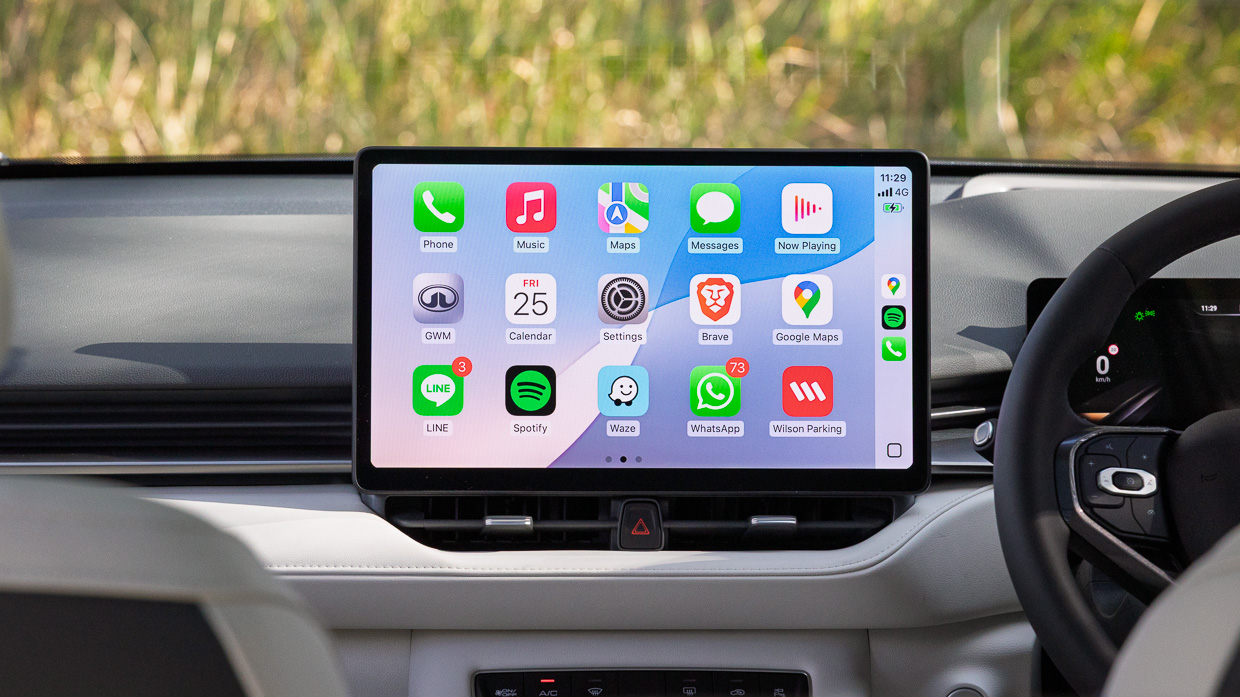
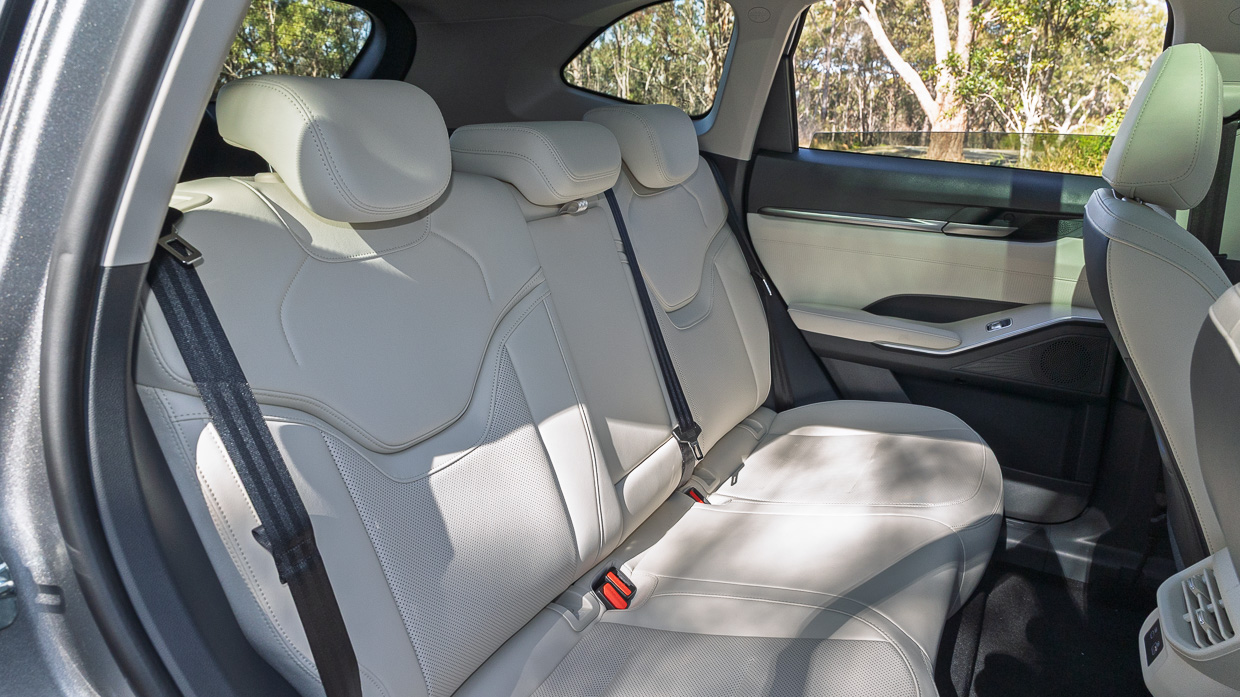
Those conveniences are missed on the ICE and HEV versions (potentially forgiveable, based on the fair pricing), though all H6s do pick up a circa-40 percent larger 14.6-inch central touchscreen that is very bright (too much so at night), snappy and crisp. Our wireless phone mirroring connection was faultless.
Despite multiple attempts, we couldn’t dial in the eight-speaker stereo to sound anywhere near clear or crisp enough to render our music well. The ICE and PHEV pick up an additional speaker. Will this help?
Back seat space is genuinely excellent, with lush legroom and, we think, more comfortable seat shaping than the front pair. Rear air vents are standard and the doors open wide.
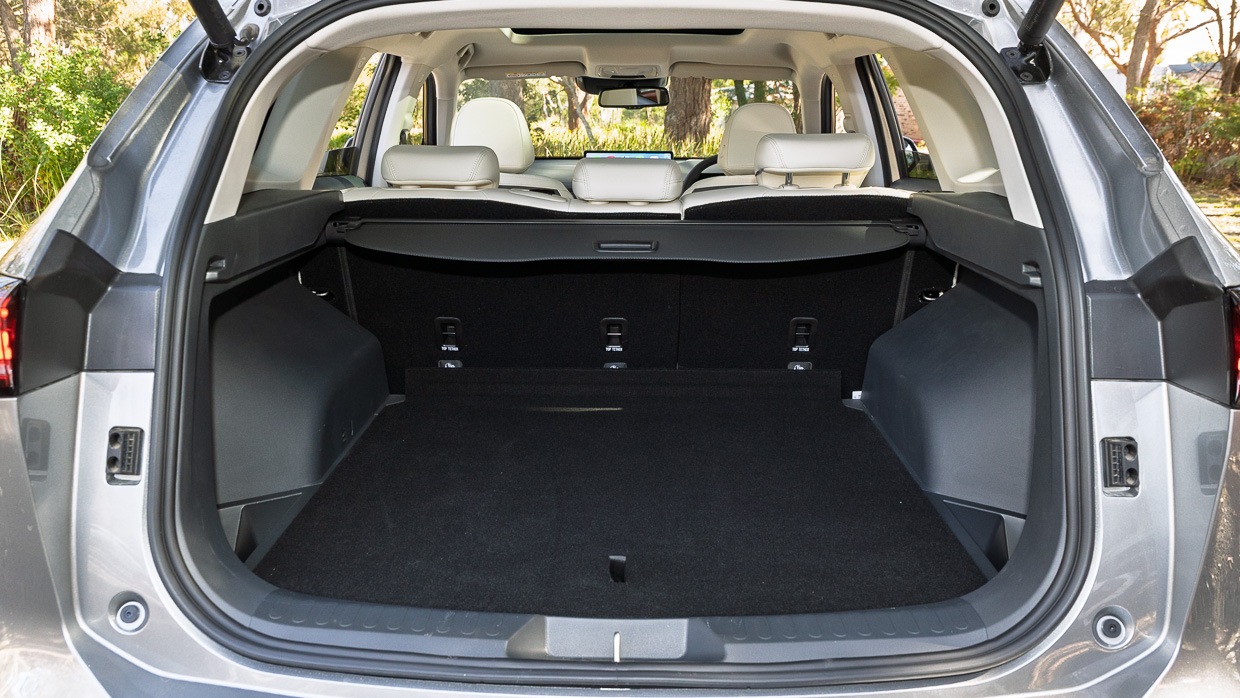
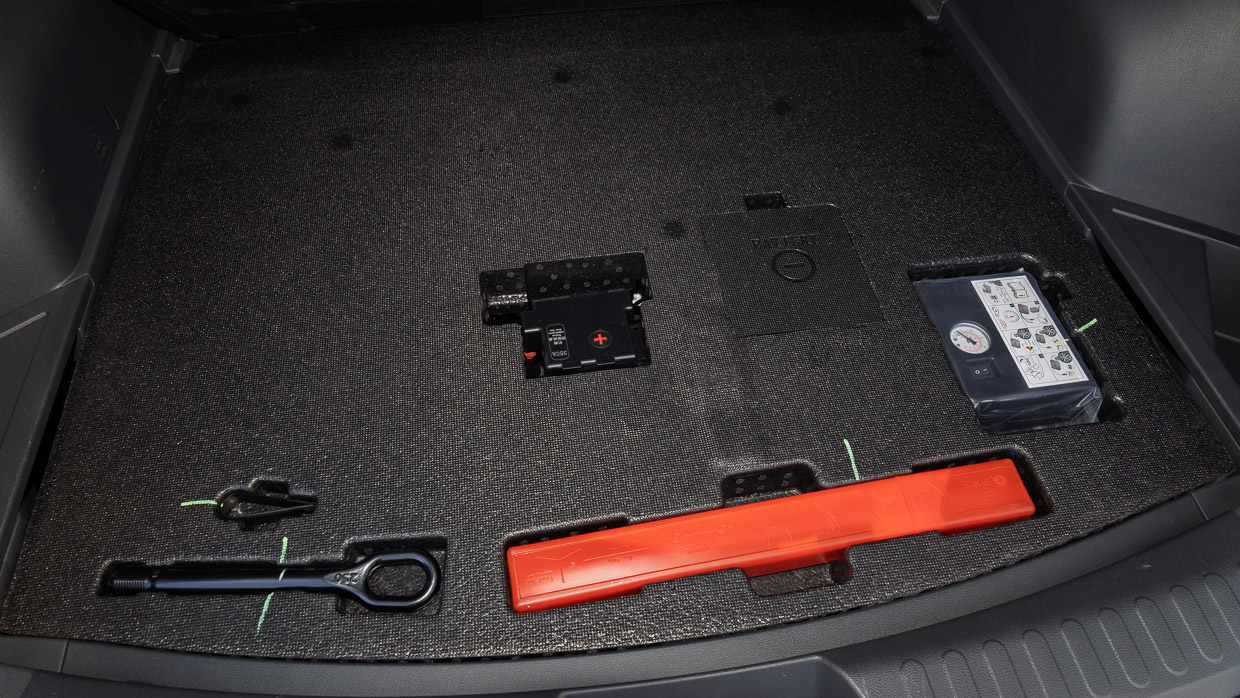
Boot space is 560 litres in five-seat mode and 1445L with the rear seats down (they split 60/40). The ICE has marginally more at 1485L.
Only the ICE version has a space saver spare; both hybrids make do with a tyre repair kit.
As the latest round of updates to the Haval H6 are simply a facelift, the underlying vehicle continues to enjoy a five-star ANCAP safety rating under that body’s easier 2022 protocols – although GWM is believed to be in the process of renewing this.
Back in 2022, the H6 scored 90 percent for adult occupant protection, 88 percent for child occupant protection, 73 percent for vulnerable road user protection and 81 percent for safety assist technologies.
It’s worth remembering 2025 protocols are more challenging when trying to achieve the same result.

Impressively, safety kit is essentially standard across the range including forwards and reversing AEB, lane keeping assistance with lane centring, rear cross traffic alert with auto braking, traffic sign recognition, blind spot monitoring, and a 360-degree camera.
We were impressed with the camera’s clarity, making parking easy.
The tuning of the H6’s safety features was more deft than GWMs we have tested in the past, with relatively uninvasive lane-keeping (with variable sensitivity) and the ability to permanently deactivate speed monitoring sounds.
As tested in HEV form, the Haval H6 is fairly cheap to run. It isn’t as efficient as GWM claims but it’s still reasonably frugal on 91-octane petrol, servicing isn’t too expensive and it has a long warranty – all good things.
In terms of fuel economy, we beat GWM’s estimates on the highway but trailed the carmaker’s claims in town. We think there’s a clear reason for this.
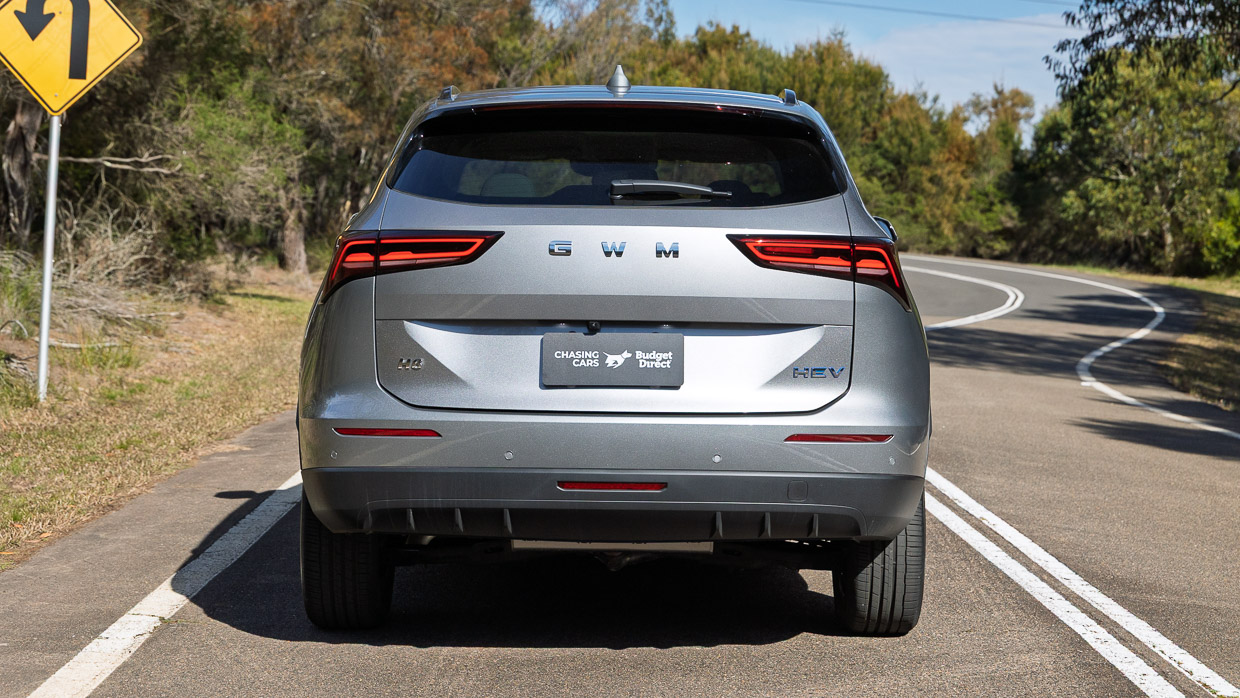
GWM claims 5.2L/100km combined for the H6 HEV, comprised of 6.2L/100km (highway) and just 3.5L/100km (urban).
We managed 6.0L/100km (highway) and 7.2L/100km (urban). The latter resulted from our testing in Sydney in winter, where morning and evening driving was generally between 7ºC and 12ºC.
We noticed the H6 HEV keeps its petrol engine on much longer after ignition than most hybrid rivals, driving up fuel consumption.
So we ran our urban fuel economy test again on a warmed-up engine and scored 6.0L/100km — still 70 percent higher than the claim…
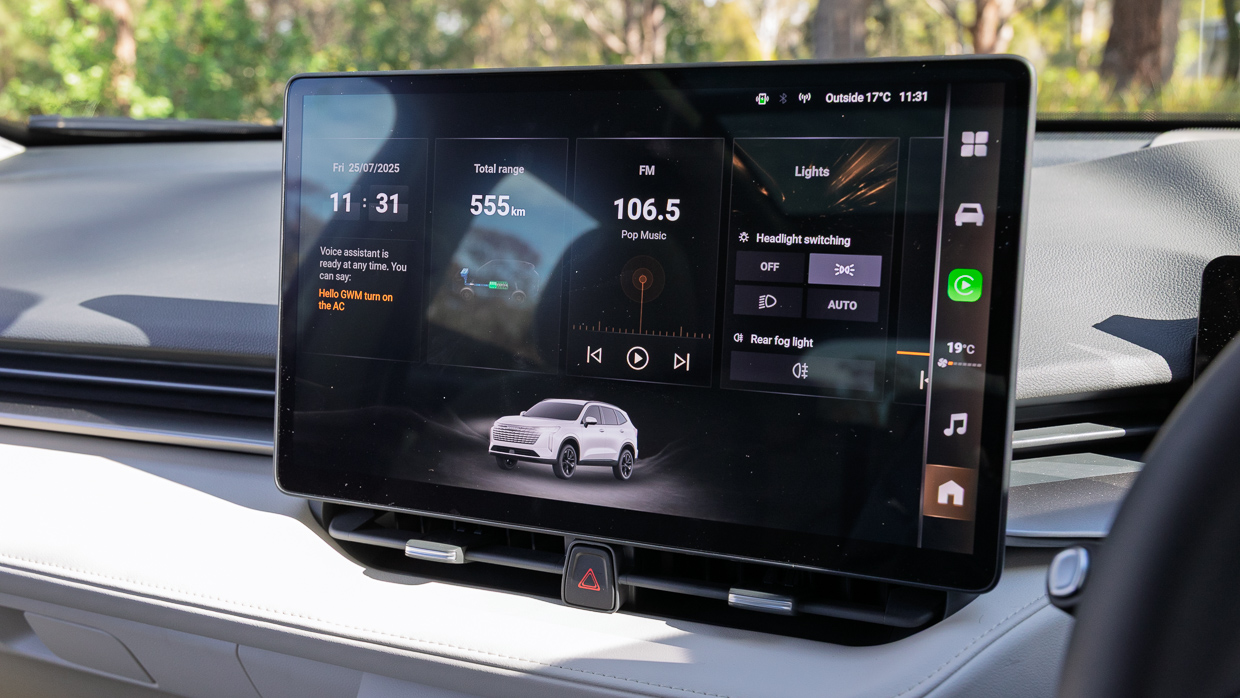
In any case, from its 61-litre fuel tank the H6’s real-world range sits between about 833km (urban in winter) and 1016km (highway), which is quite practical.
Servicing costs amount to $2020 over the first five years of ownership, with intervals generally falling at 12 months/15,000km—watch out for the first stop, though, which comes at 10,000km.
GWM offers a seven-year, unlimited kilometre warranty for both private and fleet customers, while the battery pack of the H6 HEV is covered for 70 percent state of health for eight years/150,000km.
It’s very rare to see vehicle pricing drop these days, particularly when that reduction is accompanied by an extensive facelift that improves the appearance of the car.
Yet that’s precisely what happened to the GWM Haval H6 HEV Ultra. Now even cheaper, the $40,990 (driveaway) price of this lushly-equipped Chinese hybrid SUV seems extremely fair.
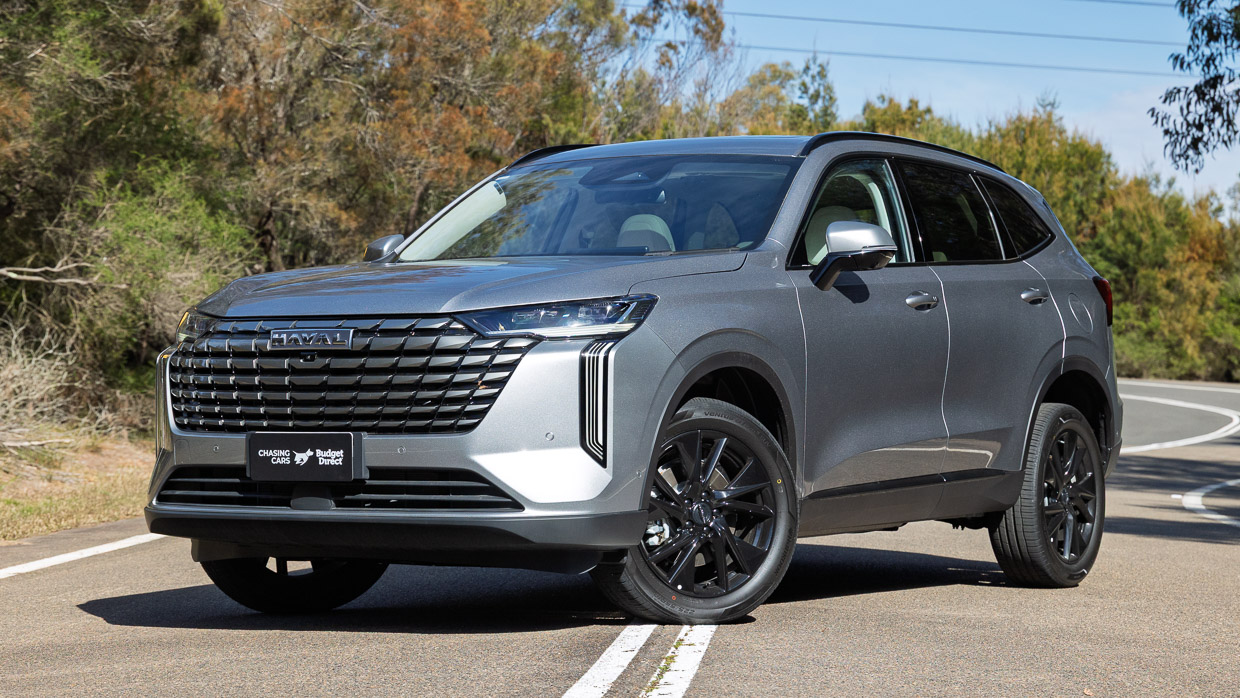
Sure, the H6 still doesn’t drive that well and there are elements to its interior we’d change (such as adding adjustable under-thigh support to the front seats) but the discount compared to established Japanese and Korean rivals is very significant indeed.
Still, we’d stop short of purchasing an H6 at this point.
With the knowledge that a talented Australian chassis engineer with a considerable portfolio of excellent cars has been unleashed on GWM’s lineup, the changes forthcoming to the ride and handling of its cars could be worth waiting for.
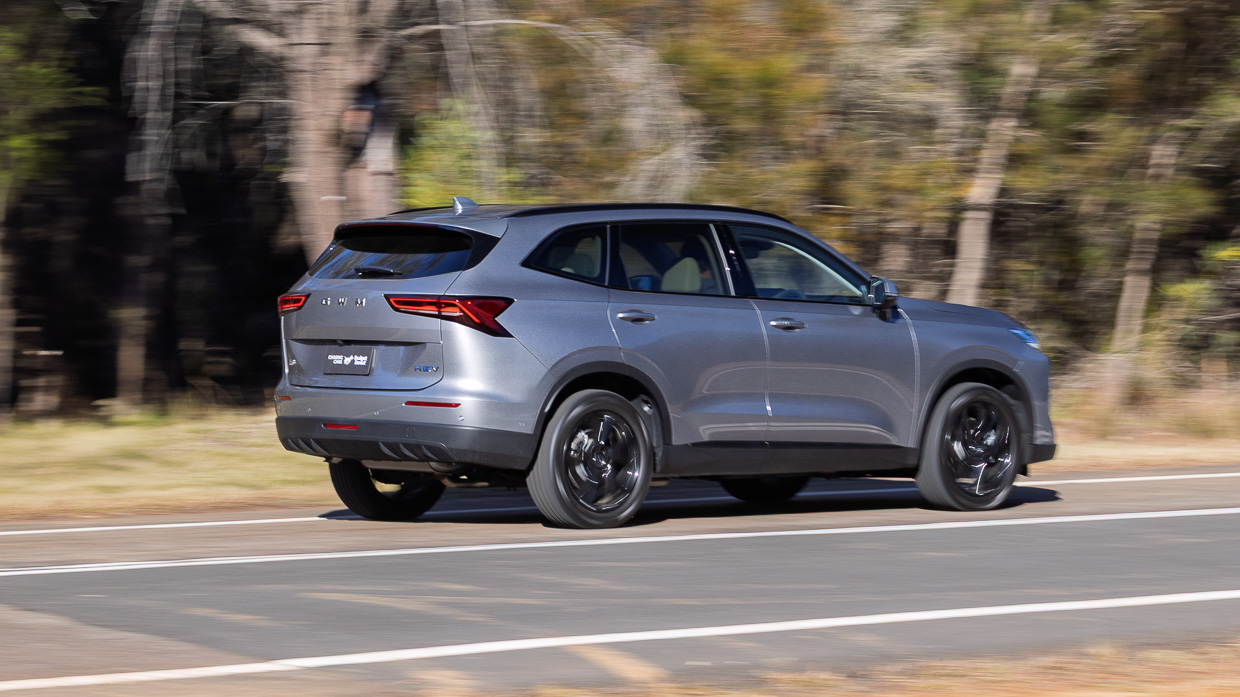
Given that ride quality and handling fluency are still problems for the H6, we’d wait and see if the forthcoming changes make it a better car to drive. If they result in a slightly higher price, we’d accept that.
Of more concern is that the powertrain also needs a rethink in terms of its software tuning. Whether such changes are on the horizon for the H6 HEV are unknown – but GWM should put that task on the agenda.
Key specs (as tested)
About Chasing cars
Chasing Cars reviews are 100% independent.
Because we are powered by Budget Direct Insurance, we don’t receive advertising or sales revenue from car manufacturers.
We’re truly independent – giving you Australia’s best car reviews.
The estimate provided does not take into account your personal circumstances but is intended to give a general indication of the cost of insurance, in order to obtain a complete quote, please visit www.budgetdirect.com.au. Estimate includes 15%^ online discount.
^Conditions Apply
Budget Direct Insurance arranged by Auto & General Services Pty Ltd ACN 003 617 909(AGS) AFSL 241 411, for and on behalf of the insurer, Auto & General Insurance Company Limited(ABN 42 111 586 353, AFSL 285 571).Because we don’t know your financial needs, we can’t advise you if this insurance will suit you. You should consider your needs and the Product Disclosure Statement before making a decision to buy insurance. Terms and conditions apply.
Indicative quote based on assumptions including postcode , 40 year old male with no offences, licence suspensions or claims in the last 5 years, a NCD Rating 1 and no younger drivers listed. White car, driven up to 10,000kms a year, unfinanced, with no modifications, factory options and/or non-standard accessories, private use only and garaged at night.
^Online Discounts Terms & Conditions
1. Discounts apply to the premium paid for a new Budget Direct Gold Comprehensive Car Insurance, Third Party Property Only or Third Party Property, Fire & Theft Insurance policy initiated online on or after 29 March 2017. Discounts do not apply to optional Roadside Assistance.
2. Discounts do not apply to any renewal offer of insurance.
3. Discounts only apply to the insurance portion of the premium. Discounts are applied before government charges, taxes, levies and fees, including instalment processing fees (as applicable). The full extent of discounts may therefore be impacted.
4. We reserve the right to change the offer without notice.